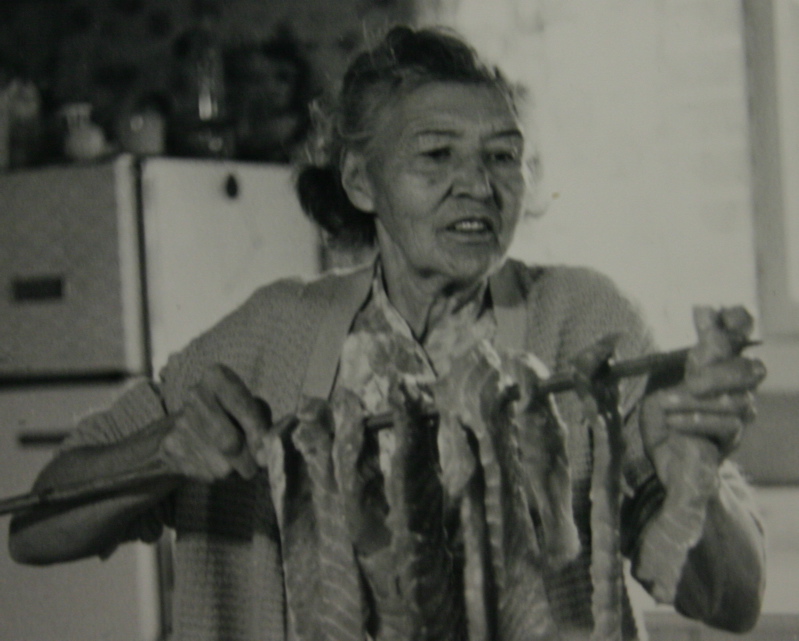The Yurok language
Geography
Yurok has been spoken in northwest California for many hundreds of years. The traditional territory of the Yurok language and people lies along the Klamath River from Wechpues (Weitchpec) to Rekw'oy (Requa), and also south along the Pacific coast to Chuerey (Trinidad). Neighboring languages include Tolowa (north along the coast), Wiyot (south along the coast), Chilula (in the hills south of the Klamath), Hupa (along the Trinity River, which meets the Klamath at Wechpues), and Karuk (upriver along the Klamath).
People
Before the arrival of Euro-Americans in the mid-nineteenth century, the Yurok language had two or three thousand speakers*; it was the living language of a thriving community. Today, while Yurok is not used as the language of ordinary daily communication in any households, there remain a few elderly first-language speakers who learned the language as children. There is also a very active language revival program in the community and local schools, with formal classes for all ages (preschool through high school, and evening adult classes) and informal immersion groups sponsored by the Yurok Tribe. If you visit Wechpues (Weitchpec) or Hop'ew (Klamath), you may meet an elder who speaks Yurok, but you may also hear young people using the language of their heritage.
*It is hard to estimate the pre-contact population: there are no written records, and many Yurok people died of new diseases or were killed in the decades after White arrival. Population estimates are based on counts of villages and the number of people believed to live in villages.
Related languages
Yurok is distantly related to its neighbor Wiyot, and to languages belonging to the Algonquian language family spoken across central and eastern North America; the Algonquian languages include Blackfoot, Cree, Ojibwe, and many others. Linguists believe that Wiyot, Yurok, and all the Algonquian languages descend from a single common ancestor spoken thousands of years ago, perhaps somewhere in present-day eastern Washington or Oregon or northern Idaho. The relations and history of these languages are areas of active research among linguists, archaeologists, and historians.
Grammar and sounds
The following web pages present general information about the Yurok language:
Other resources with more detailed information include R. H. Robins's book The Yurok language: Texts, grammar, lexicon (1958) and a Yurok Language Project booklet Basic Yurok grammar (2010), which you can download here.

Teaching, learning, and documenting Yurok

[Photo: Diana Heberger.]